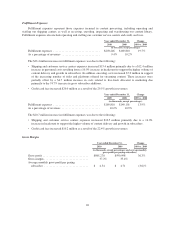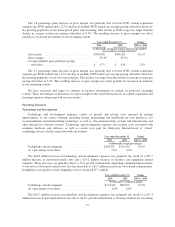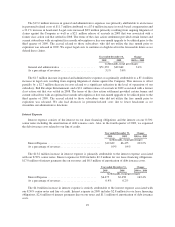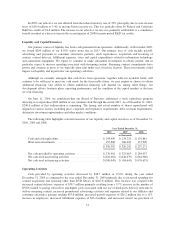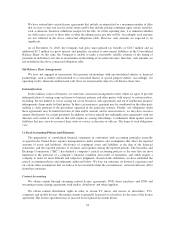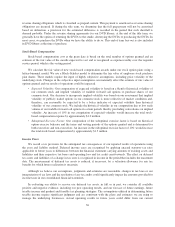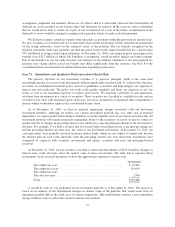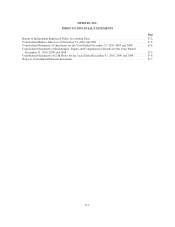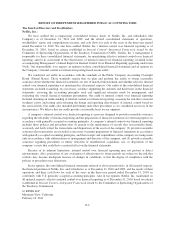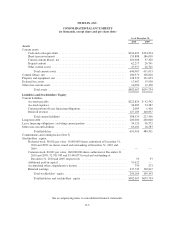NetFlix 2010 Annual Report Download - page 38
Download and view the complete annual report
Please find page 38 of the 2010 NetFlix annual report below. You can navigate through the pages in the report by either clicking on the pages listed below, or by using the keyword search tool below to find specific information within the annual report.revenue sharing obligations which is classified as prepaid content. This payment is amortized as revenue sharing
obligations are incurred. If during the title term, we determine that the full prepayment will not be amortized
based on utilization, a provision for the estimated difference is recorded in the period that such shortfall is
deemed probable. Under the revenue sharing agreements for our DVD library, at the end of the title term, we
generally have the option of returning the DVDs to the studio, destroying the DVDs or purchasing the DVDs. In
most cases, we purchase the DVDs when we have the ability to do so. This end of term buy-out is also included
in DVD library at the time of purchase.
Stock-Based Compensation
Stock-based compensation cost at the grant date is based on the total number of options granted and an
estimate of the fair value of the awards expected to vest and is recognized as expense ratably over the requisite
service period, which is the vesting period.
We calculate the fair value of new stock-based compensation awards under our stock option plans using a
lattice-binomial model. We use a Black-Scholes model to determine the fair value of employee stock purchase
plan shares. These models require the input of highly subjective assumptions, including price volatility of the
underlying stock. Changes in the subjective input assumptions can materially affect the estimate of fair value of
options granted and our results of operations could be impacted.
•Expected Volatility: Our computation of expected volatility is based on a blend of historical volatility of
our common stock and implied volatility of tradable forward call options to purchase shares of our
common stock. Our decision to incorporate implied volatility was based on our assessment that implied
volatility of publicly traded options in our common stock is more reflective of market conditions and,
therefore, can reasonably be expected to be a better indicator of expected volatility than historical
volatility of our common stock. We include the historical volatility in our computation due to low trade
volume of our tradable forward call options in certain periods thereby precluding sole reliance on implied
volatility. An increase of 10% in our computation of expected volatility would increase the total stock-
based compensation expense by approximately $1.2 million.
•Suboptimal Exercise Factor: Our computation of the suboptimal exercise factor is based on historical
option exercise behavior and the terms and vesting periods of the options granted and is determined for
both executives and non-executives. An increase in the suboptimal exercise factor of 10% would increase
the total stock-based compensation by approximately $1.5 million.
Income Taxes
We record a tax provision for the anticipated tax consequences of our reported results of operations using
the asset and liability method. Deferred income taxes are recognized by applying enacted statutory tax rates
applicable to future years to differences between the financial statement carrying amounts of existing assets and
liabilities and their respective tax bases and operating loss and tax credit carryforwards. The effect on deferred
tax assets and liabilities of a change in tax rates is recognized in income in the period that includes the enactment
date. The measurement of deferred tax assets is reduced, if necessary, by a valuation allowance for any tax
benefits for which future realization is uncertain.
Although we believe our assumptions, judgments and estimates are reasonable, changes in tax laws or our
interpretation of tax laws and the resolution of any tax audits could significantly impact the amounts provided for
income taxes in our consolidated financial statements.
In evaluating our ability to recover our deferred tax assets, in full or in part, we consider all available
positive and negative evidence, including our past operating results, and our forecast of future earnings, future
taxable income and prudent and feasible tax planning strategies. The assumptions utilized in determining future
taxable income require significant judgment and are consistent with the plans and estimates we are using to
manage the underlying businesses. Actual operating results in future years could differ from our current
36


